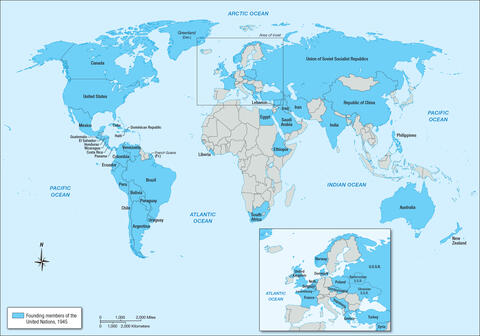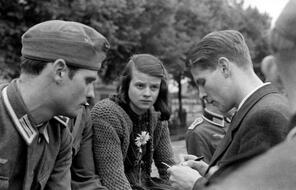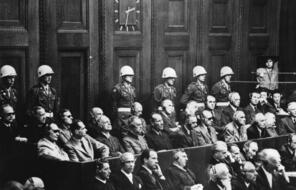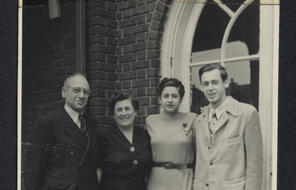The United Nations
At a Glance
Language
English — USSubject
- History
- Social Studies
- Human & Civil Rights
- The Holocaust
On June 26, 1945, 50 nations signed a charter to create the United Nations in order to promote international cooperation and human rights. See full-sized image for analysis.
In the midst of World War II, even as they struggled to defeat Germany and Japan, leaders of the Allied nations were also beginning to envision a new international institution that would ensure global peace and cooperation once the war ended. In 1941, before the United States had even entered the war, President Franklin Roosevelt and British Prime Minister Winston Churchill signed the Atlantic Charter, committing their countries to international collaboration and individual rights. At later meetings in Tehran, Yalta, and San Francisco, delegates from Allied nations developed a plan for a new organization that could replace the failed League of Nations.
The Charter of the United Nations was signed on June 26, 1945, by leaders from 50 nations. President Harry Truman, who had taken office after Franklin Roosevelt’s death that April, spoke at the closing ceremony. He called the UN Charter “a constitution—a charter for peace” and “a solid structure on which we can build a better world.” 1
The preamble to the UN Charter states:
WE THE PEOPLES OF THE UNITED NATIONS DETERMINED
- to save succeeding generations from the scourge of war, which twice in our lifetime has brought untold sorrow to mankind, and
- to reaffirm faith in fundamental human rights, in the dignity and worth of the human person, in the equal rights of men and women and of nations large and small, and
- to establish conditions under which justice and respect for the obligations arising from treaties and other sources of international law can be maintained, and
- to promote social progress and better standards of life in larger freedom,
AND FOR THESE ENDS
- to practice tolerance and live together in peace with one another as good neighbours, and
- to unite our strength to maintain international peace and security, and
- to ensure, by the acceptance of principles and the institution of methods, that armed force shall not be used, save in the common interest, and
- to employ international machinery for the promotion of the economic and social advancement of all peoples,
HAVE RESOLVED TO COMBINE OUR EFFORTS TO ACCOMPLISH THESE AIMS
Accordingly, our respective Governments, through representatives assembled in the city of San Francisco, who have exhibited their full powers found to be in good and due form, have agreed to the present Charter of the United Nations and do hereby establish an international organization to be known as the United Nations. 2
The UN Charter went into effect on October 24, 1945; immediately afterward, it was ratified by a majority of the countries that had attended the San Francisco meeting. There were 51 founding member countries. By 2016, the United Nations included 193 countries—nearly all of the independent states on earth. The map above highlights these countries.
- 1Harry S. Truman, “Address in San Francisco at the Closing Session of the United Nations Conference” (June 26, 1945), The American Presidency Project, accessed June 1, 2016.
- 2“Preamble to the Charter of the United Nations,” United Nations, accessed June 1, 2016.
United Nations Founding Members

United Nations Founding Members
On June 26, 1945, 50 nations signed a charter to create the United Nations in order to promote international cooperation and human rights.
Connection Questions
- What kind of community did the United Nations seek to create after the war? Create an identity chart for this community. How might this community define its universe of obligation? What tools might this community use to achieve its goals?
- In what ways was the UN Charter a response to the atrocities of World War II? What parts of this vision do you think have become closer to reality? In what areas do we still have a long way to go?
- The United States never joined the League of Nations, the international organization that was formed after World War I as part of the Treaty of Versailles. Why do you think the United States chose to join the United Nations after World War II? What might have changed?
- Is there value in having an agreement whose goals may seem difficult or even impossible to achieve?
How to Cite This Reading
Facing History & Ourselves, "The United Nations," last updated August 2, 2016.













